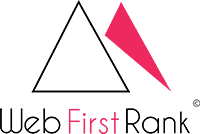- 21 February 2023
- by Ahmed Bouselmi
- Non classé
Search Engine Optimization (SEO) is a crucial element in the world of online marketing, as it can help businesses improve their website’s visibility and ranking on search engine results pages (SERPs). However, some SEO practitioners resort to using unethical and manipulative tactics, also known as “black hat” techniques, to achieve quick results. While these techniques may initially provide a boost in traffic and rankings, they can also lead to severe consequences, including Google penalties.
What are Black Hat SEO Techniques?

Black hat SEO techniques refer to the use of unethical and manipulative tactics to improve a website’s ranking in SERPs. These techniques violate search engine guidelines, and they typically involve methods such as keyword stuffing, hidden text, cloaking, link farming, and paid links.
Keyword stuffing is the practice of inserting a large number of keywords or key phrases into a page’s content, meta tags, or URLs. Hidden text involves using the same color for the text as the background, making it invisible to users but readable by search engines. Cloaking is the process of showing different content to search engines and users, with the intention of deceiving search engines. Link farming involves creating a network of websites that link to each other, while paid links refer to the practice of buying links from other websites to improve a website’s ranking.
The Risks of Using Black Hat Techniques
While black hat techniques may provide short-term gains in website rankings and traffic, they can lead to long-term consequences that harm a website’s reputation and visibility on search engines. Google has strict guidelines that penalize websites that use black hat tactics, and these penalties can range from a drop in rankings to a complete removal of a website from search engine results pages.
In addition, black hat techniques can harm a website’s credibility and trustworthiness. These tactics can lead to a poor user experience, as visitors may find the website’s content irrelevant or misleading. This, in turn, can lead to a decrease in traffic and a loss of potential customers.
Best Practices for White Hat SEO

White hat SEO refers to ethical and legitimate techniques that follow search engine guidelines and improve a website’s ranking and visibility. Unlike black hat techniques, white hat SEO focuses on creating high-quality content that provides value to users and optimizing a website’s technical aspects to make it more accessible to search engines.
Some best practices for white hat SEO include:
- Conducting keyword research and using relevant keywords in the website’s content, meta tags, and URLs.
- Creating high-quality and engaging content that provides value to users.
- Optimizing the website’s technical aspects, such as page speed, mobile-friendliness, and crawlability.
- Building high-quality backlinks from reputable and relevant websites.
- Engaging with users on social media and building a strong online presence.
Conclusion
In conclusion, black hat SEO techniques may provide short-term gains, but they come with the risk of severe penalties and long-term consequences that can harm a website’s reputation and visibility. It is essential for businesses and website owners to follow ethical and legitimate white hat SEO techniques to achieve long-term success and build a strong online presence. By creating high-quality content and optimizing a website’s technical aspects, businesses can improve their rankings and visibility on search engine results pages while also providing value to users.












